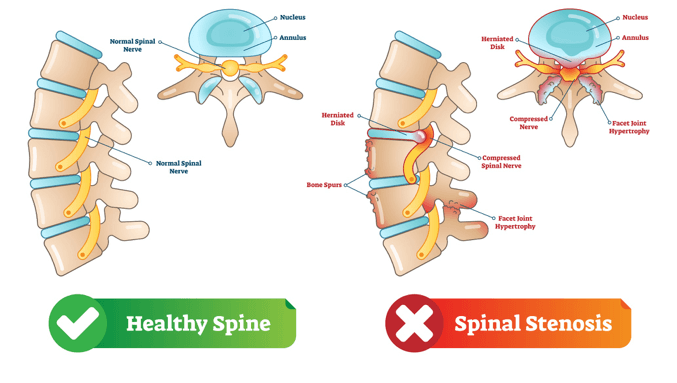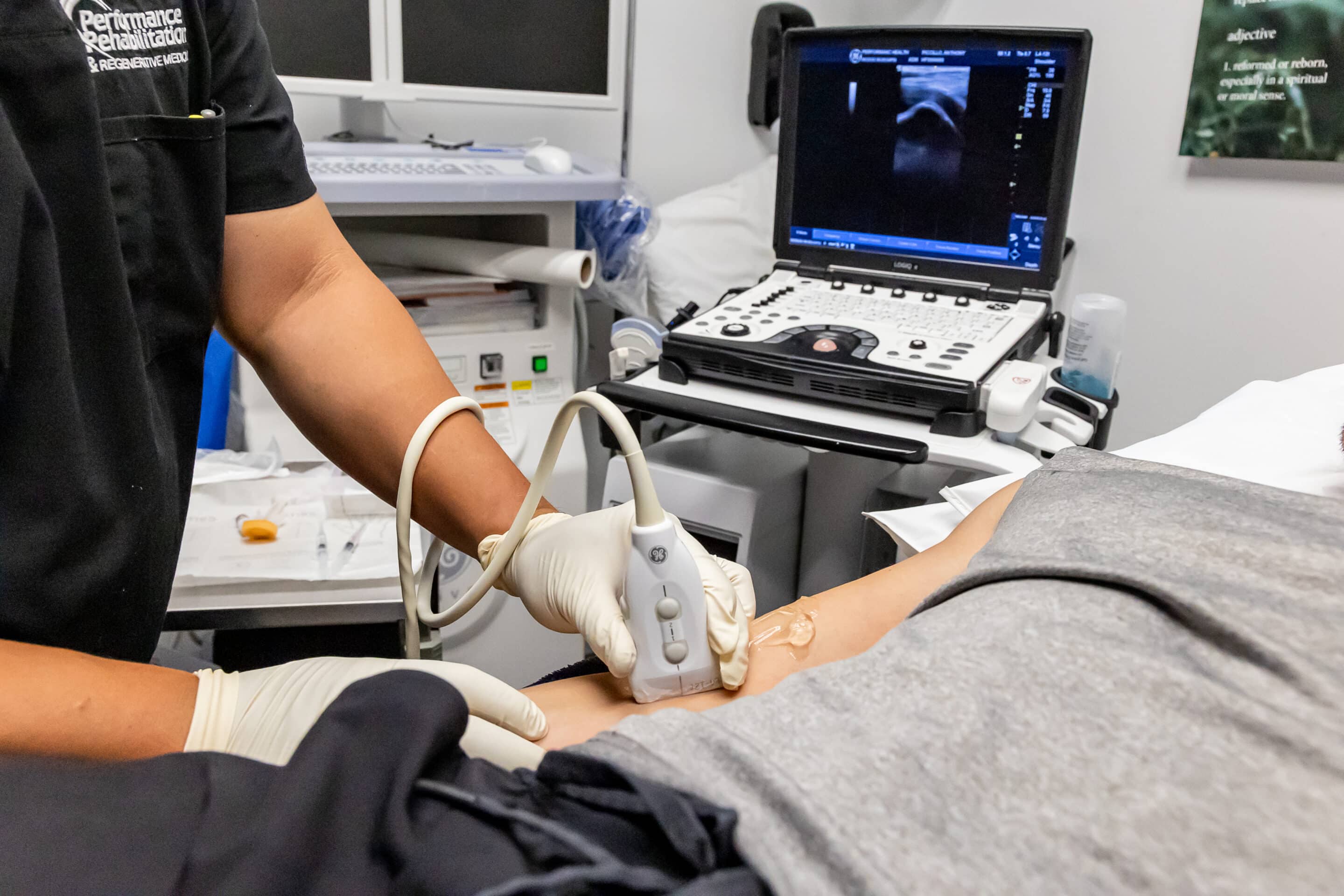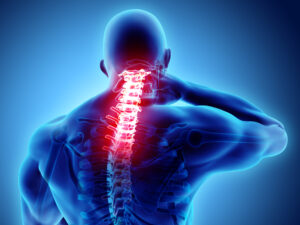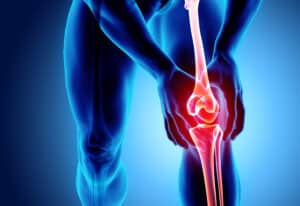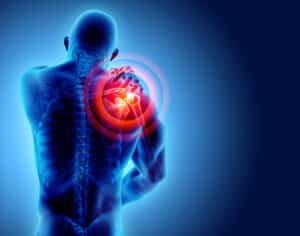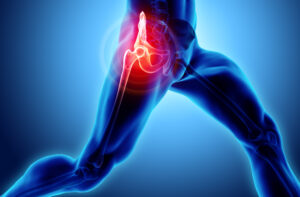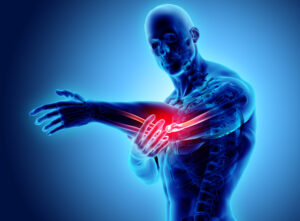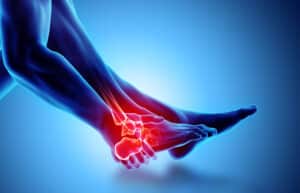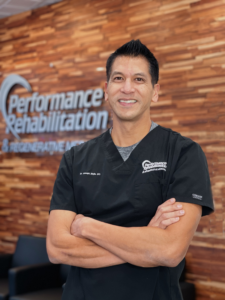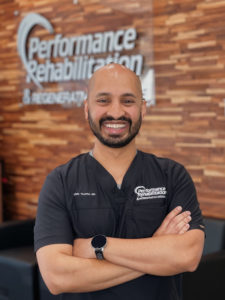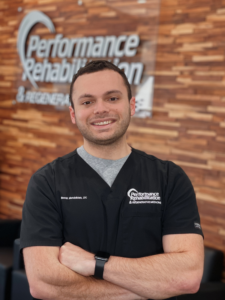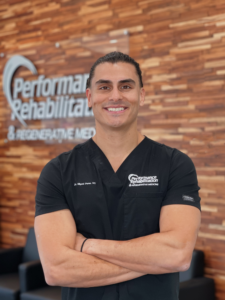Lumbar Spinal Stenosis Relief in New Jersey
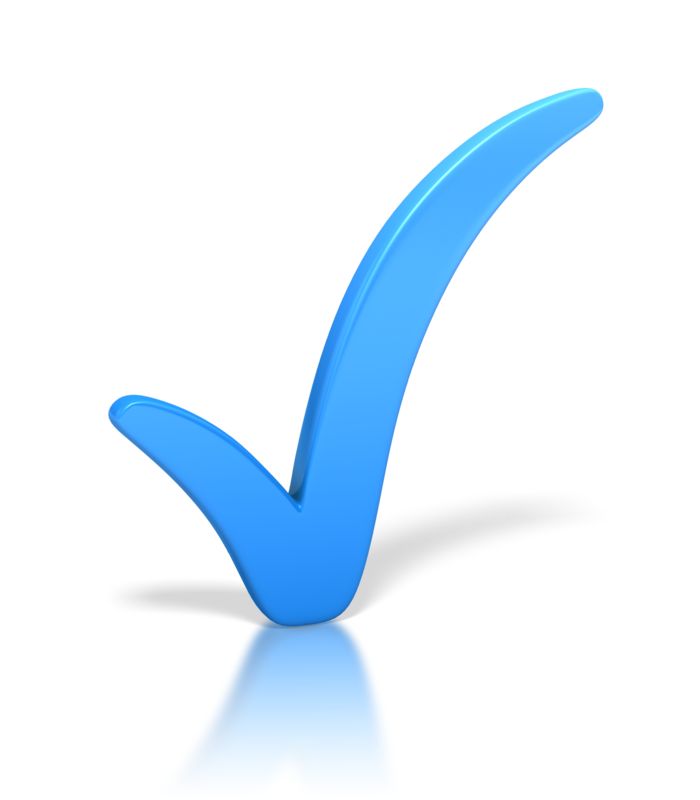
Reviewed by Dr. Ryan Lumia
Table of Contents
If you or a loved one are experiencing chronic lower back pain, you might come across the term ‘Lumbar Spinal Stenosis’. Grasping what this term entails and exploring the treatment options is a vital step forward. According to Johns Hopkins Medicine, lumbar spinal stenosis is quite common in adults over 60. It affects more than 200,000 adults in the United States, resulting in substantial pain and disability.
What is Lumbar Spinal Stenosis?
Lumbar Spinal Stenosis is when the spinal canal in your lower back tightens up. Imagine a tunnel filled with soft jelly-like cushions between hard bony blocks, with a bundle of electric wires running through. Now, if the tunnel gets narrow, the wires (your nerves) might get a squeeze, this puts pressure on the nerves and that’s when you feel the tingling pain! You can learn more about the anatomy of the spine by checking this video out!
What Causes Lumbar Spinal Stenosis?
There are many reasons the tunnel in lumbar spinal stenosis narrows, this can happen because of things like aging, injuries, or other conditions. Just like a blocked tunnel can cause traffic jams, a narrowed spinal canal can press on your nerves and make your back or legs feel painful or weak. Let’s dive in and learn more about why this happens.
Degenerative Causes
- Aging: As we grow older, our spine faces the daily hustle and experiences wear and tear, which can cause the tunnel to shrink a bit.
- Osteoarthritis: Sometimes, bones decide to grow little bumps called bone spurs, which can invade the tunnel’s space and narrow the spinal canal.
- Disc Degeneration: The discs, those jelly-like cushions between the bony blocks, can wear out over time, leaving less room for the nerves.
Congenital Causes
- Genetics: In some cases, you can be born with a narrow spinal canal.
- Scoliosis: A curved spine can lead to a reduced space for nerves.
Acquired Causes
- Injuries: Trauma to the spine, like a knock on the back, can cause immediate stenosis or speed up the degenerative process.
- Tumors: Rarely, growths, like tumors, can develop inside the spinal canal, causing the spinal canal to narrow.
What are the Signs or Symptoms of Lumbar Spinal Stenosis?
The signs of Lumbar Spinal Stenosis can be tricky as they differ from person to person. Some common signs include:
- A sore lower back
- Tingly or painful legs
- Trouble standing up straight or walking
- Feeling weak or numb in your legs
How Do Doctors Check for Lumbar Spinal Stenosis?
How Will Performance Check for Spinal Stenosis?
If you feel any of these signs or symptoms, it is best to see a doctor and get checked out for Lumbar Spinal Stenosis. The doctors at Performance will evaluate your back through conversation, a physical assessment, and X-rays in the office to look for bone spurs or other abnormalities. You may also get sent out for an MRI to take a more detailed look at the soft tissues, such as discs and nerves. You can read about different diagnostic procedures here or learn more about it on this webinar!
What are the treatments for Lumbar Spinal Stenosis?
While surgery is not always necessary for individuals with lumbar spinal stenosis, it is crucial to pursue timely interventions in order to facilitate recovery from this condition. Typically, patients will benefit from a multifaceted approach to treatment, which may include a combination of therapies and interventions. The following are some of the options:
Non-Surgical Options
- Pain Medication: Simple medications like over-the-counter NSAIDs or prescription medication can help soothe the pain.
- Physical Therapy: The goal of physical therapy is to improve posture and strengthen your back. During your physical therapy session, your physical therapist will show you some special movements. These movements are designed to ease the pressure on your nerves, which can help reduce pain. You’ll also be doing stretching and exercises that help you move more easily. These exercises are focused on making the joints and muscles in your back, as well as your arms and legs, more flexible and strong. Learn more about how our Physical Therapists can help and check out these 5 exercises for lower back pain relief.
- Steroid Injections: Steroid injections are corticosteroid shots that helps relieve pain, they are usually used in conjunction with physical therapy. The way that steroid injections work are like ice packs for swelling. When steroid injections are used, they help take away the swelling, which makes the pain and other problems go away, learn more about them!
Surgical Treatments
- Laminectomy: A laminectomy involves removing the lamina, which is the back part of the vertebra (bone in your spine). This creates more space and relieves pressure on the spinal nerves.
- Spinal Fusion: Spinal fusion is a procedure where two or more vertebrae are joined or “fused” together. This can be done using bone grafts, metal rods, or screws. This is done to stabilize the spine and prevent movement between the fused bones, which can reduce pain.
- Minimally Invasive Procedures: There are minimally invasive procedures like MILD, a procedure that removes small pieces of bone and thickened tissue to restore space in the spinal canal without the need for general anesthesia or implants, and Radiofrequency Ablation, an electrical current to heat up a small area of nerve tissue to decrease pain signals from that area. MILD and RFA can be some of the less invasive options.
Prepping for a Doctor’s Visit
When visiting a doctor, it’s a good idea to jot down when you feel the pain, how often, and if anything specific triggers it. Being prepared helps your doctor understand your back’s story better!
The Team-Based Approach and What to Expect?
At Performance, we have a team of caring doctors, such as pain management specialists, physical therapists, and chiropractors who work together to create a plan just for you! Check out our Team-Based Approach to treatment.
Lumbar Spinal Stenosis can sound scary, but with the right information and a great healthcare team like the ones here at Performance, managing it becomes a lot easier. If you or someone you know is facing back pain issues, don’t hesitate to reach out to us at 908-754-1960 or book an appointment with us at any one of our locations in Branchburg, NJ, Somerset, NJ or Watchung, NJ.
Note: The information in this blog is for informational purposes and not a replacement for professional medical advice.
